Glanum, Mausoleum
Glanum: Roman village in southern France, modern St.Rémy-de-Provence.
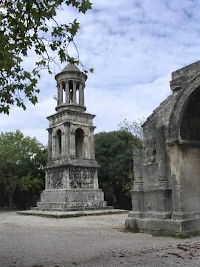
Several monuments of the Roman city of Glanum have survived. In the area that is called “Les antiques”, you can see Glanum's southern gate and an ancient mausoleum.
The mausoleum, 18 meters high, can be found at the beginning of the road to Arles and Nîmes, and is dated to 30 to 20 BCE. The dedicatee was a warrior in the armies of Julius Caesar and/or the emperor Augustus, who awarded him with the Roman citizenship. The inscription says that the tomb was erected by Sextus, Lucius and Marcus Julius, the sons of Gaius, and dedicated to their father and grandfather; hence its alternative name, Cenotaph of the Julii. The fourfold arch that is the lower part of the mausoleum reminds of a triumphal arch, a fitting symbol for a warrior.
The top of the monument reminds one of a round temple or tholos. There may have been statues of the deceased and his father as heroes. No urn was found inside the monument, so perhaps it was placed in this temple - if the monument was not dedicated to someone who was missing in action.
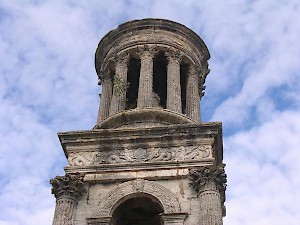
At the bottom are historical and mythical reliefs, showing scenes from ancient legends. The combination suggests that deceased warrior and his family were compared to the heroes of old.
The northern relief shows an unidentified cavalry fight. The eastern relief is certainly inspired by common representations of the war between the Greeks and the Amazons, but in fact shows a famous war deed by the dedicatee: in the center, he takes the spoils from an enemy, who may have died in single combat. To the left, his family receives the news.
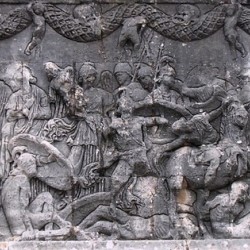 Glanum, Mausoleum, east reliëf |
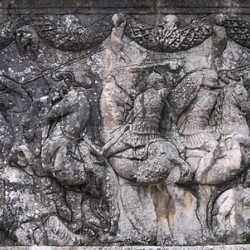 Glanum, Mausoleum, north reliëf |
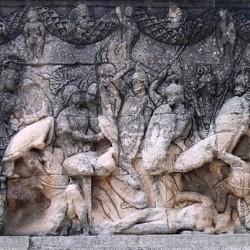 Glanum, Mausoleum, west reliëf |
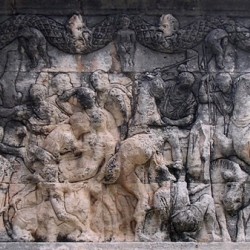 Glanum, Mausoleum, south reliëf |
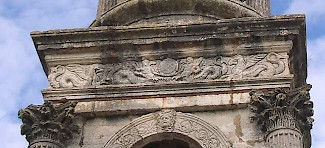
The southern relief shows the legend of the Calydonian hunt, conducted by Meleager. The two horsemen are Castor and Pollux; several people are wounded. The western relief, finally, shows a battle scene from the Trojan War: the struggle over the possession of the corpse of Patroclus.
The needle-shape of this "tower tomb" is not unusual in Gaul (there's a similar monument in Igel, Germany) but the closest parallel may be in a different part of the Roman Empire: in Africa, where Neopunic tombs have been erected in many places (e.g., Msletten, another Msletten, Ghirza's South Cemetery, Sabratha, and Thugga; the latter may be the mausoleum of Massinissa).